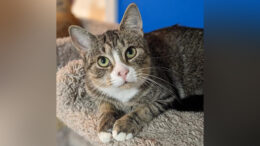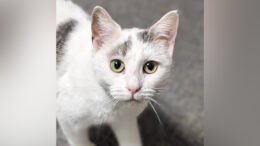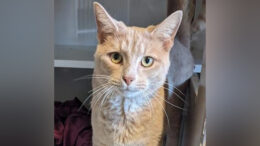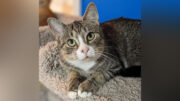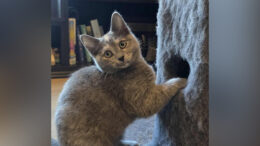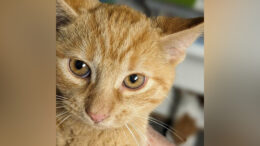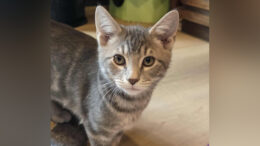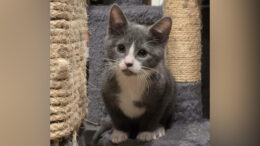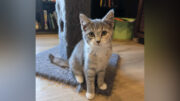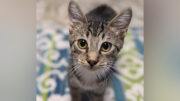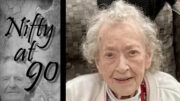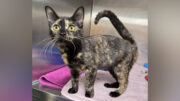While some hummingbirds fight over the feeder, the Mexican sunflowers, or tithonia, are quite popular with the bees and butterflies.
In fact, several bothersome bumblebees tried to force a feeding monarch off of the flower’s bright orange blossoms.
An article titled “Monarch Butterflies Hold a ‘Torch’ for Tithonia” posted on monarchbutterflygarden.net, listed the pros and cons of the plant.
Some of the pros were:
- It attracts a wide variety of pollinators (This is proving to be true.)
- Attracts swarms of migrating monarchs (So far just one monarch in this blogger’s garden.)
- Easy to start from seed (True, too, most of the seeds sprouted. However, one must remember to leave lots of room for them as they will get up to 6 feet tall and branch out.)
According to the website, some of the cons included that the plant must be regularly deadheaded, it has average water needs and care needs to be taken to avoid overwatering and taller plants should be staked up to avoid toppling over.
The black form of the tiger swallowtail butterfly.
However, a few observances of some sluggish bees on the tithonia blossoms raised questions and concerns over whether there was something in the nectar affecting the bees.
A bee on a Mexican sunflower blossom.
Some online searching revealed that some nectars can ferment and cause bees to get drunk.
An article titled “How bees make honey” at www.thoughtco.com, said that nectar contains about 80 percent water, along with complex sugars.”
“Left in its natural state, nectar would ferment,” the article continued.
In “Pollination and Floral Ecology” by Pat Willmer, Willmer said “some nectars do invert or ferment rather easily … the nectar accumulates ethanol and may be come intoxicating: it can make bees drunk.”
An article titled “The Beers and the Bees: Pollinators Provide a Different Kind of Brewer’s Yeast” by Nsikan Akpan and Matt Ehrichs with PBS NewsHour was posted online at www.scientificamerican.com.
The article said “yeast live in flower nectar, where the microbes feast on boatloads of sugar. The yeast produce alcohol, along with those sweet aromas that tickle our noses, which in turn attract the buzzing bugs. Bees sometimes get drunk off this fermented nectar.”
Other online articles said some flowers add a little something extra into their nectar.
“Nectar: Drink with a Zing?” posted on pollinators.blogspot.com said, “When chemists continued analyzing the nectar of diverse flowers they found a few surprises. In some instances caffeine or nicotine are added to the menu.”
A recent study from the University of Haifa said that bees prefer nectar with small amounts of nicotine and caffeine over nectar that does not contain these substances.
Whether or not the tithonia has fermented nectar or other additives remains unsolved. Online searches appeared to turn up nothing of the sort for the plant.
One online blogger had seen drunken bees on her echinacea flowers, but she said she found no direct support for it.
Some online sources revealed that passion flower nectar also made bees drunk.
Other websites found that certain pesticides can create the effects of drunk bees. Although, no pesticides have been used on this blogger’s tithonia plants.
Meanwhile, if the bees are drunk, the outlook isn’t very good.
The website qi.com, an offshoot of the BBC show QI or Quite Interesting, provided an astonishing fact about drunk bees.
“Bees who are drunk from fermented nectar have many more flying accidents than sober ones and can sometimes forget how to get back to their hive, dying as a result. Even if they make it back to the hive they can be rounded on by other bees who punish the drunken bee by chewing off its legs,” the site said.
Ouch, it would seem that nectar-drunk bees do not receive a warm welcome.
Meanwhile, the male ruby-throated hummingbird that regularly guards the feeder has been run ragged this past week. There are no less than three other hummers vying for the nectar. The feeder patroler has had trouble being in several places at one time… although he tries.
A ruby-throated hummingbird. This could be a female or possibly a juvenile male.
A monarch butterfly feeding on some phlox.
(A Walk in the Woods contains photos from newsroom staffer Anna Applegate’s daily jaunts around her neck of the woods. Tagging along on the treks are dogs, Buford, Sherman and Sadie, and goats, Kyle and Kennedy. Applegate manages the Good Times and can be emailed at bigdogs.thederrick@gmail.com)











